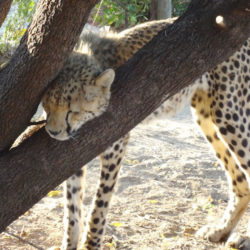UNAM HWC Visit and Lecture
-

- by February 7, 2018
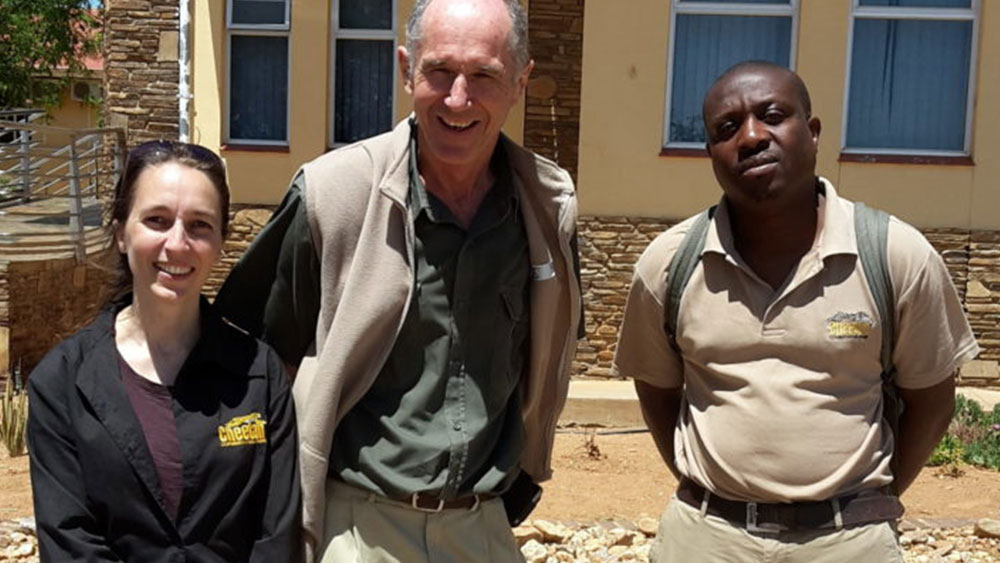
Also by Ishmael Makamba
Human Wildlife Conflict is a thorny issue worldwide where communities live adjacent to or with wildlife and Namibia is no exception. It is therefore no surprise that one of the core functions at Cheetah Conservation Fund (CCF) is Human Wildlife Conflict mitigation and the research surrounding that. Our approach is non-lethal conflict resolution. We are constantly researching on new methods and technologies to try and reduce this problem in not only our core operating area which is the Greater Waterberg Landscape but in Namibia as a whole.
CCF has a hotline for reporting livestock predation cases and a reaction team that includes a Wildlife Veterinarian and an experienced Human Wildlife Conflict team member. In research, we do collaborate with many institutions in terms of data, knowledge and expertise sharing including the University of Namibia, Faculty of Veterinary Medicine.
Namibia began offering The Bachelor of Veterinary Medicine degree at the University of Namibia’s Neudamm Campus, on the Neudamm farm 30km East of Windhoek in 2013 with the first class now in its 4th year. They have a full course on Wildlife and Exotics Medicine and part of the learning outcomes is to appreciate different forms of human wildlife conflict and the mitigation thereof. Dr Mark Jago, who is taking the students on that course invited the CCF veterinary team to share their expertise and present a lecture on carnivore livestock predation.
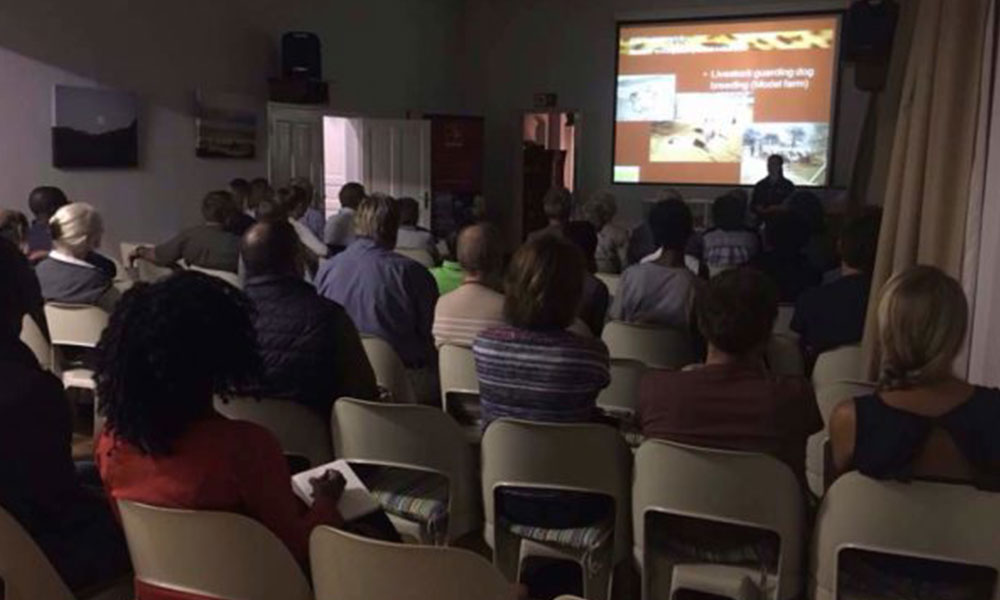
We arrived at Neudamm campus around 9:30 am to head straight for our lecture as Dr Jago was already waiting for us. After the introductions we went straight into the presentation with Anne giving an overview on Human Wildlife Conflict, including its definition and types, as well as a series of tools routinely used by CCF that are available to veterinarians when tasked to investigate a predator attack, from bite mark identification to the recent project that she is embarking on which is using genetics to ID a predator from the saliva at the bite marks. Unfortunately, we lost power just as she was about to finish her section and so we had to present the rest without power-point pictures which we selected to help the students to grasp the concepts better.
Ishmael then took over to talk about the mitigation measures in resolving HWC specifically CCF’s Livestock Guarding Dog Program, Livestock Health Management scorecard and the recent E-collar program that we will be pilot testing in the communal areas this year. The presentation was very well received such that Dr Jago expressed his keenness to invite us again for some practical and theory presentation.
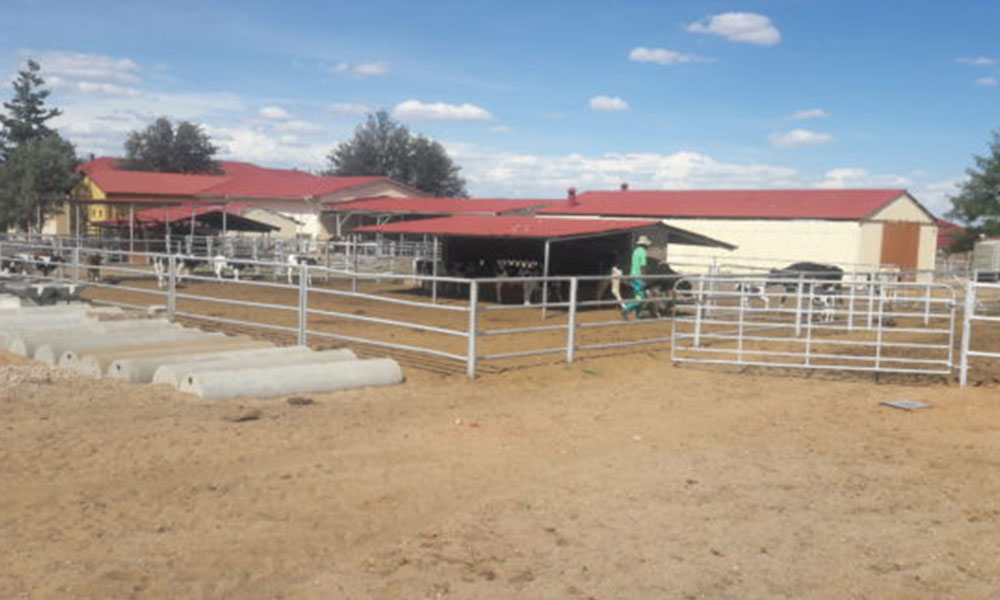
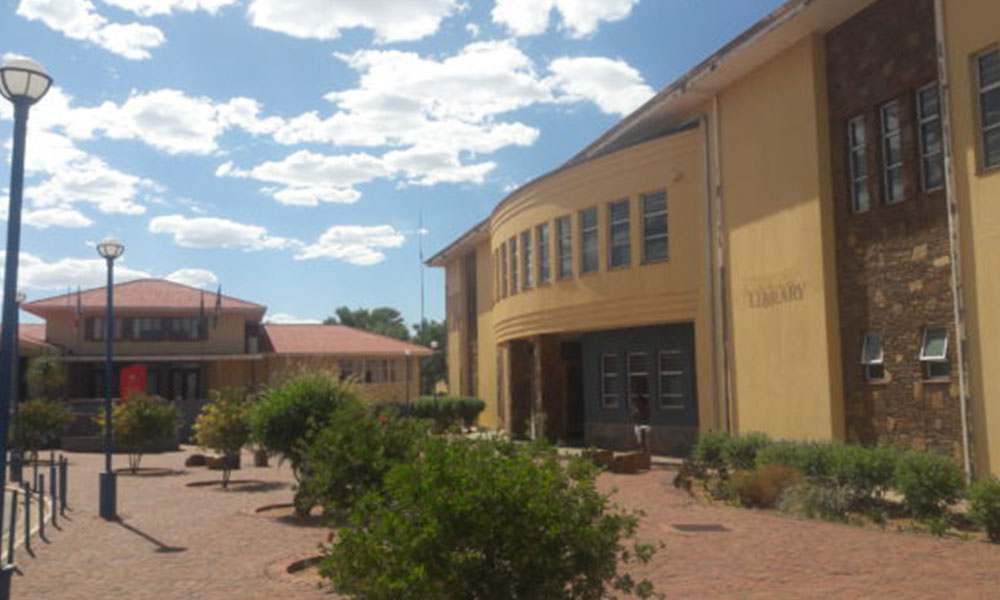
We were later taken around the Neudamm campus facilities that included the state of the art Pathology and Necropsy laboratories, the veterinary clinic which has a brand-new X-ray machine, chemistry analyser and pharmacy and still growing. In all that Ishmael had a chance together with Dr Jago to investigate a case of mastitis in a Holstein – Friesian dairy cow and so did a rectal palpation as well as a quick physical examination. After treating the cow and signing off the records, Dr Jago took us to the anatomy laboratory, the library and we got to meet other staff members as well.
You could really feel the passion and dedication of the staff members as well as that of Dr Jago as he showed us the bigger picture and land allocated for the Teaching and the Large and Wildlife Animal hospital as the faculty heads towards growth. Exciting times ahead indeed for the Faculty in years to come and we were glad to get a chance to witness the first fruits. It was a pleasant trip and the students were wonderful.
We officially said our goodbyes and dashed to the airport as Anne had managed to squeeze in two lectures, one on Cheetah Genetics at NEWS (Namibia Environment & Wildlife Society) the night before, and our joint HWC Lecture a couple of hours before her flight back to the United States.
Related Reading
-
June 1, 2020
Two Trainings at CCF -
May 11, 2020
How Cheetahs Check Their Messages?


